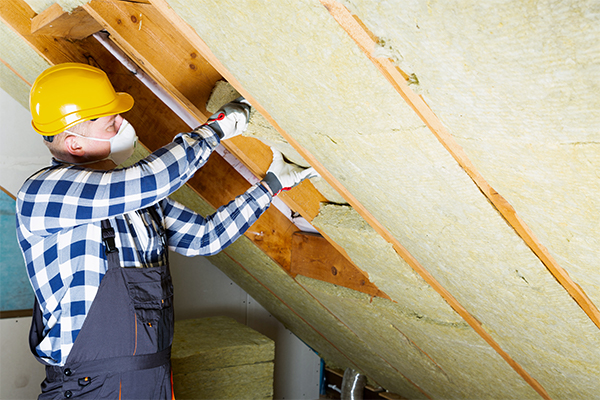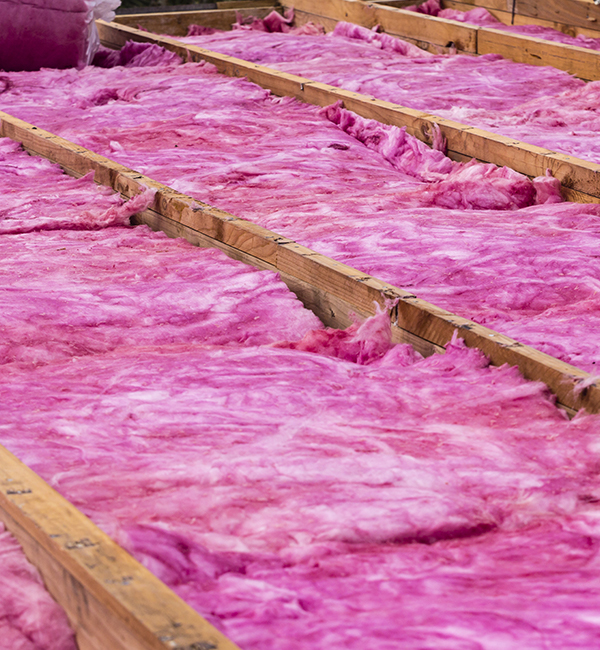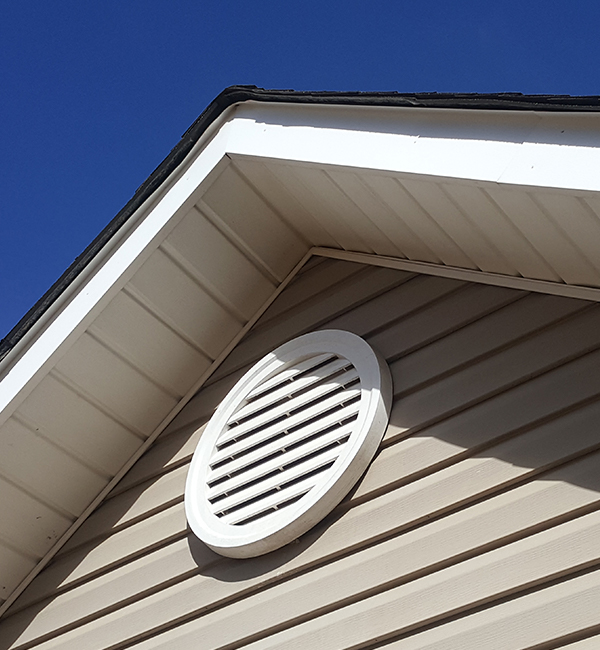Insulation
Living in Florida, you know just how brutal the summer heat can be. There are days where it seems like the pavement might just melt. In fact, you’ve probably made it a habit to turn your car on and let it cool down before you drive to work or run errands. The intensity of the tropical sun means that you need to consider the type and age of the insulation in your home. Not only can it make things more comfortable indoors, but it can also help you save a lot of money on your monthly electric bill.
You probably don’t use your attic to store much, if anything, since it’s primary function is to hold the insulation for your house. If you haven’t been in the attic recently to check on the condition of your insulation, then it’s a good idea to take a look around up there and assess whether it’s time to replace your old insulation. The insulation in your attic has a tough job since it has to deal with the heat rising inside your home and the heat that comes from the sun beating down on the roof. It’s a good idea to have your insulation inspected once a year to make sure you are getting the highest level of protection from the elements.

How Insulation Works
Before we talk about how insulation works, it’s important to understand the flow of heat. Heat naturally flows in one direction only — from hot spaces to cold spaces by one of three processes. These processes are conduction, convection, and radiation. In fact, sometimes more than one process occurs at the same time.
Conduction
Simply put, conduction is the transfer of heat between two objects that are touching. It can occur in solids, liquids, or gases that are at rest. When you put a pot of soup on the stove and turn up the heat, the metal of the pot begins to heat up first. Eventually, the energy is transferred from the metal pot to the soup inside the pot. Likewise, if you’ve ever left a spoon in your cup of hot coffee, then you’ve probably experienced how conduction will also heat up the spoon.
Convection
Convection is another way that heat can travel, and it occurs when heat is transferred by the movement of liquids or gases. This is the reason why warm air, which is less dense than cold air, will rise in your home. To return to the example of the pot on the stove, the soup on the bottom of the pot will heat up as a result of conduction since it is in contact with the pot itself. The process of convection is how the rest of the soup will heat up. Currents of heat travel up through the soup.
Radiation
The third manner in which heat travels is radiation. In radiation, there is no material carrier to transmit the energy — neither the source of the heat or the body that is heated are in contact. A good example of radiation is the way in which the sun radiates heat outward through our solar system. Any body, whether hot or cold, radiates energy. The hotter a body, the more energy it radiates.
Insulation and Heat
No matter how heat travels, it will always travel from a warmer area to a cooler area until there is no longer a difference in temperature between the two spaces. During the winter, this means the heat in your home is flowing from all heated living spaces directly to all adjacent unheated spaces, including the attic, garage, and outside. The opposite is true during the summer, heat is traveling from outside into every area of your home.
Since environments that are too hot or too cold are not comfortable to live in, you probably use your air conditioner during the summer and your heater during the winter. If you don’t have quality insulation in your home, however, these machines will work much harder than they should in order to maintain a comfortable temperature inside. Insulation is designed to decrease the flow of heat to keep it where you want it no matter what season it is.
Insulation can last anywhere from 20 to 80 years, which is good news for your wallet! If you live in an older home, however, it’s important to check the condition of the insulation in your attic as the quality of insulation has greatly increased since the 1970s. If you’re not sure whether it’s time to replace your insulation, contact a professional to come in and measure the R-value and reapply insulation where needed.


Insulation and R-Values
An R-value is the measure of an insulating material’s resistance to conductive heat flow. The higher the R-value, the greater the effectiveness of the insulation. The R-value depends on a couple of factors:
- Type of insulation
- Thickness of insulation
- Density of insulation
Adding more layers of insulation to your home will increase the R-value and the resistance to heat flow. Since each home is unique in terms of structure, square footage, and energy efficiency, you’ll need to check with an insulation contractor to determine how much insulation your home requires.
Not only do you need to consider the R-value of the insulation you install in your home, but also where you plan to install it. If insulation is compressed, it is unlikely that it will provide you with the full R-value rating. Since heat flows more easily through studs and other building materials, the R-value of a wall or ceiling are likely to be different. Remember to consider your climate, the type of heating and cooling units you have, and the part of the house you want to insulate as you discuss your insulation plans.
Fiberglass
Fiberglass is the most common insulation material and is made from fine glass fibers. It is commonly used in batts, rolls, and loose-fill insulation.
Cellulose
Cellulose is made from recycled paper products and is usually a loose-fill insulation.
Foam
Foam insulation, contrary to its name, is made from polystyrene, polyisocyanurate, or polyurethane, which are all types of plastic. It is typically sprayed or installed in rigid foam boards.
Mineral Wool
Mineral wool refers to either rock wool or slag wool. Rock wool is man-made from a combination of natural minerals, and slag wool is man-made from a waste product of molten metal. Both are used in batts, rolls, and loose-fill insulation.
Natural Fibers
Natural fiber insulation is made from a variety of materials, including:
- Cotton
- Sheep’s wool
- Straw
- Hemp
These materials are treated to be fire, mold, and insect resistant.
Denim Insulation
Denim insulation is made from recycled jeans and post-industrial denim cotton, just as the name implies. This type of insulation is non-toxic and non-irritating, which makes it easier for DIYers to install, but it is more expensive than other more common insulation materials.
Benefits of Insulation
While it might seem obvious that the benefit of insulation is the way in which it helps keep your home at a comfortable temperature, there are actually a number of other benefits you can also enjoy. These benefits offer both immediate and long-term rewards. Let’s take a look.
Reduce Energy Costs
When you’re able to keep the heat inside during the winter and the cold inside during the summer, you’re going to be able to reduce the amount of energy you use, which will significantly lower your energy bill. Keeping your Florida home comfortable means that you’re almost always using your HVAC unit. Decrease your use with quality insulation from Green Solutions.
Keep More Heat In/Out of Your Home
When you wake up on a cold morning, you want to step out into a comfortably warm room. Likewise, hot summer days make you want to retreat to your cool living room. Keep more heat in or out of your home depending on the time of year with quality insulation.
Reduce Your Carbon Footprint
The amount of energy you use is directly related to your carbon footprint, which is the amount of carbon dioxide and other carbon compounds that are emitted due to the consumption of fossil fuels. You can reduce your carbon footprint and support a healthier environment with the right type of insulation for your climate and home.
Increase Comfort
It’s worth repeating that good insulation will definitely help keep your home comfortable no matter what time of the year.
Enhance Value of Your Home
When you’re ready to sell your home, you want to put your best foot forward so you can set a high asking price. With that in mind, you can increase the value of your home with good insulation as it will reduce your annual utility bills. Consider investing in insulation for your home as it offers both short-term and long-term benefits.
Customize Your Insulation
Regardless of when your home was built, there is an ideal insulation solution! In fact, you can even opt to have your insulation done in tiers to help avoid the high upfront costs typically associated with a complete install and get the maximum return on your investment.
Enhance Your Health
It’s no secret why people tend to get sick more during the winter than the summer — colder temperatures suppress your immune system. With that, be sure to check that your home has the right level and type of insulation to promote a healthier environment inside your home.

Insulation Promotes Energy Efficiency
You want to enjoy a comfortably cool home, save money, and help the environment, right? Consider becoming part of the energy efficiency industry today by exploring our deal program. Join our Green Solutions Florida family today!
Set Up a Free Consultation to Learn More
Reduces Cost of Utilities
The ROI and higher house selling numbers wouldn’t be there if the utility bill reduction wasn’t so impressive. Every homeowner knows that the energy costs make up a significant chunk of your monthly living expenses. Energy efficient upgrades, however, can save you anywhere from 5 - 30% on your utility bills on a monthly basis. With utility prices climbing every year, energy efficiency has never been more important or more popular.
Helps Protect The Environment
Residential buildings are estimated to contribute to around 19% of the national greenhouse gas emissions. With the right energy efficient upgrades, the average household can decrease their energy emissions by 25-30%. It’s one of the best ways to do your part to save and preserve the environment and slow down the global warming process.

The Energy Efficiency Boom is Entirely Logical. Be Logical About the Opportunity It Presents
Energy efficiency is a trend that most homeowners are in love with. It’s about more than being green, it's about saving the green in their wallets. And if there’s one thing that can motivate folks, it’s the ability to save thousands of dollars with a simple upgrade. Want to become a part of the booming energy efficiency industry? Discover our dealer program and become a part of the Green Solutions of Florida family today.



